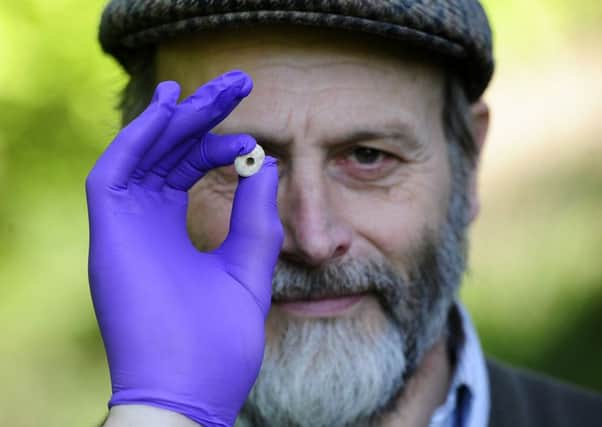Barbs and bullets reveal the power of the Roman empire


But how much do we really know about the Antonine Wall?
More all the time, it seems, as a new exhibition at Callendar House – complete with a large reconstruction of the wall – proves.
The Antonine Wall is a historic landmark which runs across our district, from the Clyde to the Forth.
Advertisement
Hide AdAdvertisement
Hide AdIn some places its ramparts and ditches – even forts and bathhouse – are distinctive, in others they are barely recognisable and in some totally covered.
But it has quite a story to tell, a reminder of the power of an empire that reached across the globe more than 2000 years ago.
The exhibition aims to show us the wall as a formidable frontier and demonstrates how the Roman army used local geography to create an effective obstacle.
Built around 142 AD, this was no barrier for mere show – booby traps, barbs and ballistics were all employed by the Romans to control their borders with ruthless efficiency.
Advertisement
Hide AdAdvertisement
Hide AdArchaeologist and keeper of local history at Falkirk Community Trust Geoff Bailey said new discoveries mean experts now understand the wall better than they did even 20 years ago, the last time such an exhibition was staged.
“There was a time when it was trendy to talk about the wall as just being a visual barrier to demarcate the Roman empire,” he said.
“Actually, it was a very formidable barrier, controlling the way people were travelling from north to south.”
In 1991, Falkirk Museum found defensive pits along the berm, the flat piece of ground between the rampart and the ditch.
Advertisement
Hide AdAdvertisement
Hide AdAt first these were thought to contain pointed spikes covered by bracken – essentially a minefield.
However, later work showed some of them to be cippi [pronounced chippi] – pits containing pointed branches embedded in soil.
“I like the idea of Italians bringing cippies to Scotland then!” said Geoff, smiling.
But the cippis are no laughing matter. These branches would have been interlocked, forming a formidable barrier, similar to coils of barbed wire.
Advertisement
Hide AdAdvertisement
Hide AdWhen aged, the points of the branches became brittle and as they shattered were even sharper than before.
Defensive pits found in 1991 by Falkirk museum service have now also been found on Hadrian’s Wall.
“It makes you realise how much of an obstacle it must have been,” said Geoff.
Another discovery are slots in the base of the ditch, measuring 0.3m square.
Advertisement
Hide AdAdvertisement
Hide AdWhile even the experts can’t be certain, the most likely explanation is that these held an entanglement made up of hawthorn cuttings – the Roman equivalent of barbed wire.
And in the unlikely event that anyone made it that far, on the lip of the ditch a narrow ledge contained a drystane dyke.
Were anyone to reach this it would have been almost impossible to climb without causing it to tumble on top of them – in other words, a booby-trap!
If the brutal effectiveness of the Romans is brought to life with the replica wall, the exhibition also boasts objects that bring the world of the Roman soldier tantalisingly close.
Advertisement
Hide AdAdvertisement
Hide AdAmong the exhibits is an incredible local find – the copper alloy figure of a griffin found by metal detectorist Lee Swan from Reddingmuirhead, probably dropped from a helmet of a Roman soldier while on parade. (For the full story of its discovery, see page 8.)
And, on loan from Corbridge, are stone ballista balls designed to have been fired from a catapult – weapons that would make short work of a human skull.
Also on loan is another example of Roman innovation – lead sling shot from Burnswark in Dumfries.
Geoff said: “They are interesting because many of them have holes drilled through them so they whistle as they fly through the air – a terror weapon similar to the noise made by Stuka dive bombers in the Second World War.”
Advertisement
Hide AdAdvertisement
Hide AdThe exhibition is for all ages, with special interpretive tours to help children understand it, and several interactive exhibits including a catapult, though it will use ping pong balls to inflict minimum damage!
For residents of the district who might take the wall for granted, this is a chance to understand the power and importance of an historic local landmark.